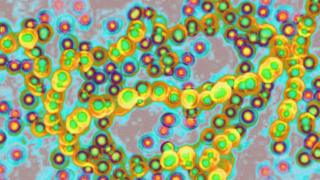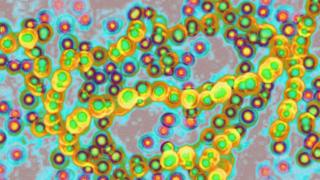Essex Strep A: District nurses ‘most likely cause’ of outbreak
The bacterium has infected at least 33 people in Essex, claiming 15 lives. …

 Image copyright BSIP/Getty Images
Image copyright BSIP/Getty Images The “most likely cause” of a bacterial outbreak that has seen 15 people die was district nursing teams, a document obtained by the BBC has revealed.
At least 33 people in Essex have been infected by the strain of invasive Group A Streptococcus (iGAS) bacterium.
Of 32 cases initially found in the area 29 had previously been visited by Provide nurses, files obtained showed.
Mid Essex Clinical Commissioning Group (CCG) said an investigation into the cause was continuing.
Provide said it had “robust infection prevention policies” and that the cause of the infection may never be known.
The BBC submitted a request under the Freedom of Information Act to Public Health England (PHE) and the CCG, which oversaw health spending in the area, for documents relating to the outbreak.
A PHE briefing note received through the request said: “The most likely hypothesis as to cause of the outbreak is contact with, and spread via, district nursing services in the area.”
It noted 31 of the 32 then-known cases had contact with district nurses in the preceding 14 days – most of those with Provide workers.
However, no single nurse had contact with all cases and the most cases an individual had been in contact with was seven.
‘Excellent track record’
When asked about the link to nurses on 26 June, the day the briefing note was circulated, PHE told the BBC “we haven’t as yet identified a cause”.
The outbreak was first identified in February in Braintree before spreading to Chelmsford and Maldon.
Further cases were retrospectively discovered dating back to December 2018.
Provide said it had “an excellent track record” of infection prevention and had been working with the CCG, PHE and NHS England to understand how the infection spread and prevent it from doing so.
In a statement it said: “Firstly, we would like to reiterate our sympathy and condolences to those affected by the outbreak.
“Identifying the exact cause of the outbreak is particularly complex.
“Not all cases had contact with our team. The majority of our patients are being treated in their own homes rather than in a contained setting such as a hospital where it is possible to control access and consistently maintain levels of infection control.
“Therefore, it may never be possible to identify the exact cause of the outbreak due to the number of factors involved.”
The company added it was taking part in an independent investigation into the outbreak.
The CCG said Provide had been rated as “outstanding” by the Care Quality Commission in March and said while patients affected were receiving nursing care in the community it was unable to share any learning from the investigation at this time.
It said: “To ensure we mitigated the risk of a wider spread of infection, additional enhanced infection prevention control measures were put in place by Provide and continue to be rigorously applied across the area.”
After the discovery of the outbreak nursing stations were deep cleaned and additional infection prevention measures were out in place, the CCG said.

